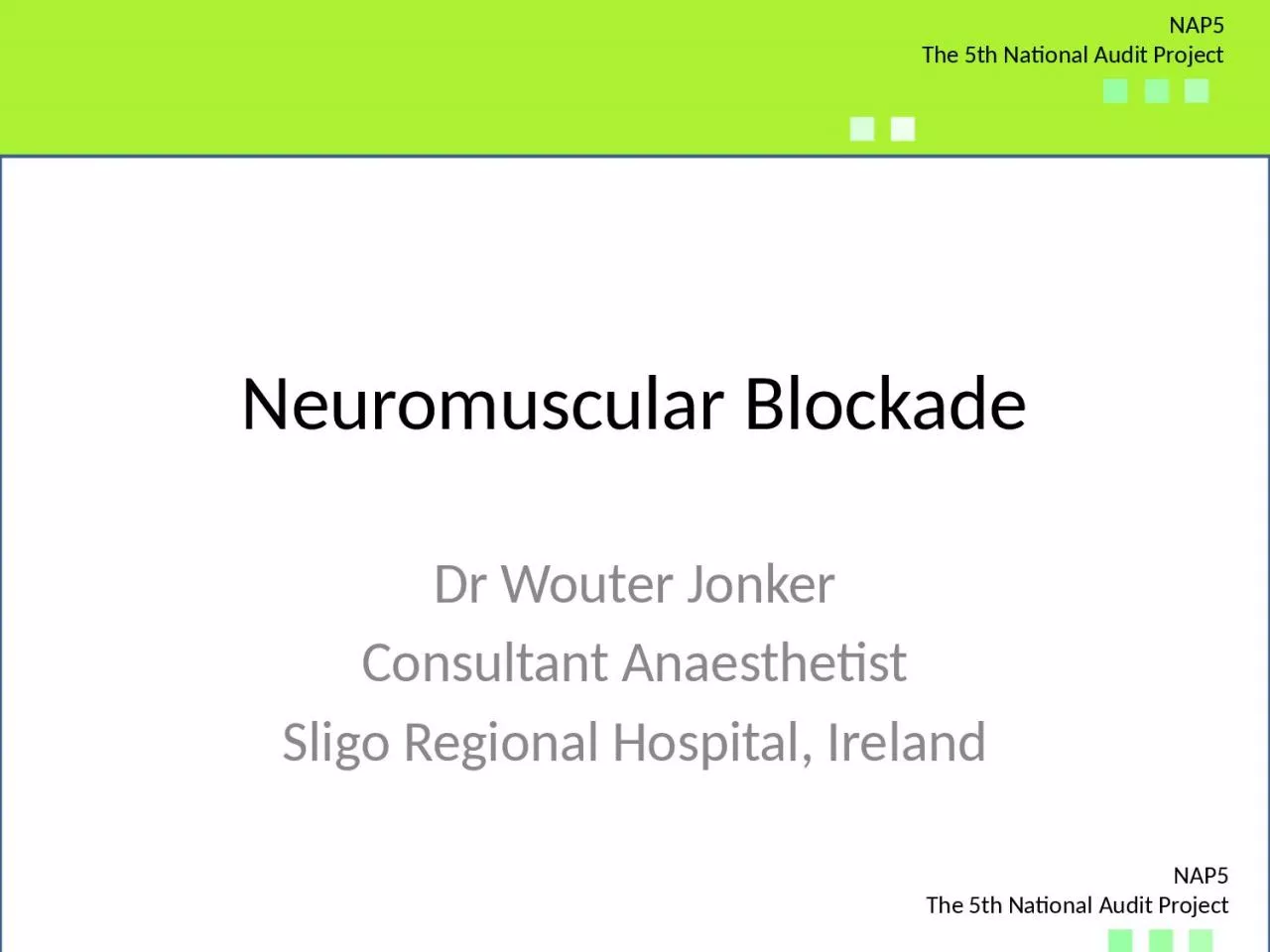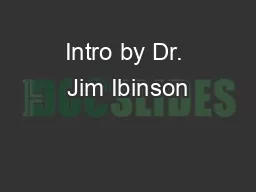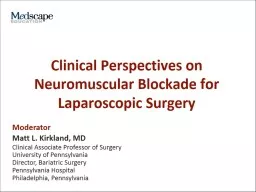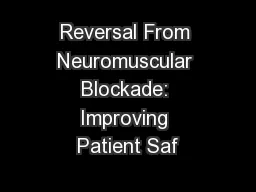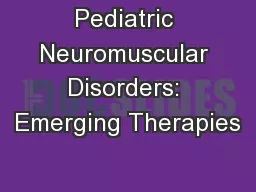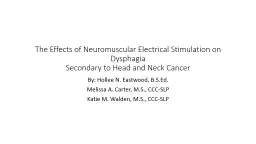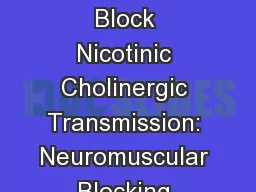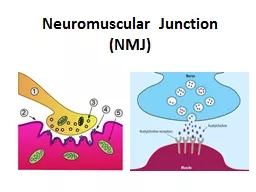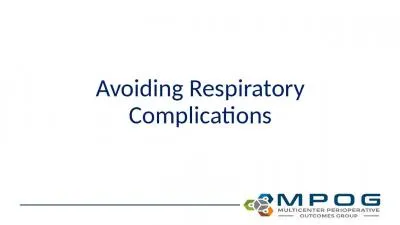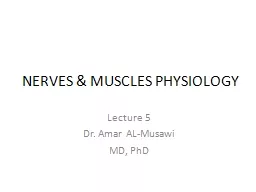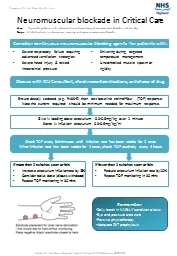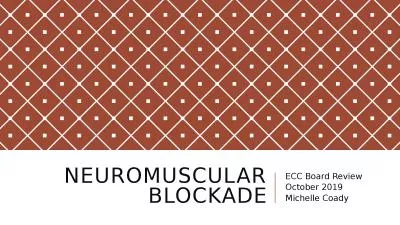PPT-Neuromuscular Blockade Dr Wouter Jonker
Author : hazel | Published Date : 2023-07-21
Consultant Anaesthetist Sligo Regional Hospital Ireland Aim Demonstrate the relation between AAGA and the use of neuromuscular blocking NMB drugs How NMB affects
Presentation Embed Code
Download Presentation
Download Presentation The PPT/PDF document "Neuromuscular Blockade Dr Wouter Jonker" is the property of its rightful owner. Permission is granted to download and print the materials on this website for personal, non-commercial use only, and to display it on your personal computer provided you do not modify the materials and that you retain all copyright notices contained in the materials. By downloading content from our website, you accept the terms of this agreement.
Neuromuscular Blockade Dr Wouter Jonker: Transcript
Download Rules Of Document
"Neuromuscular Blockade Dr Wouter Jonker"The content belongs to its owner. You may download and print it for personal use, without modification, and keep all copyright notices. By downloading, you agree to these terms.
Related Documents

